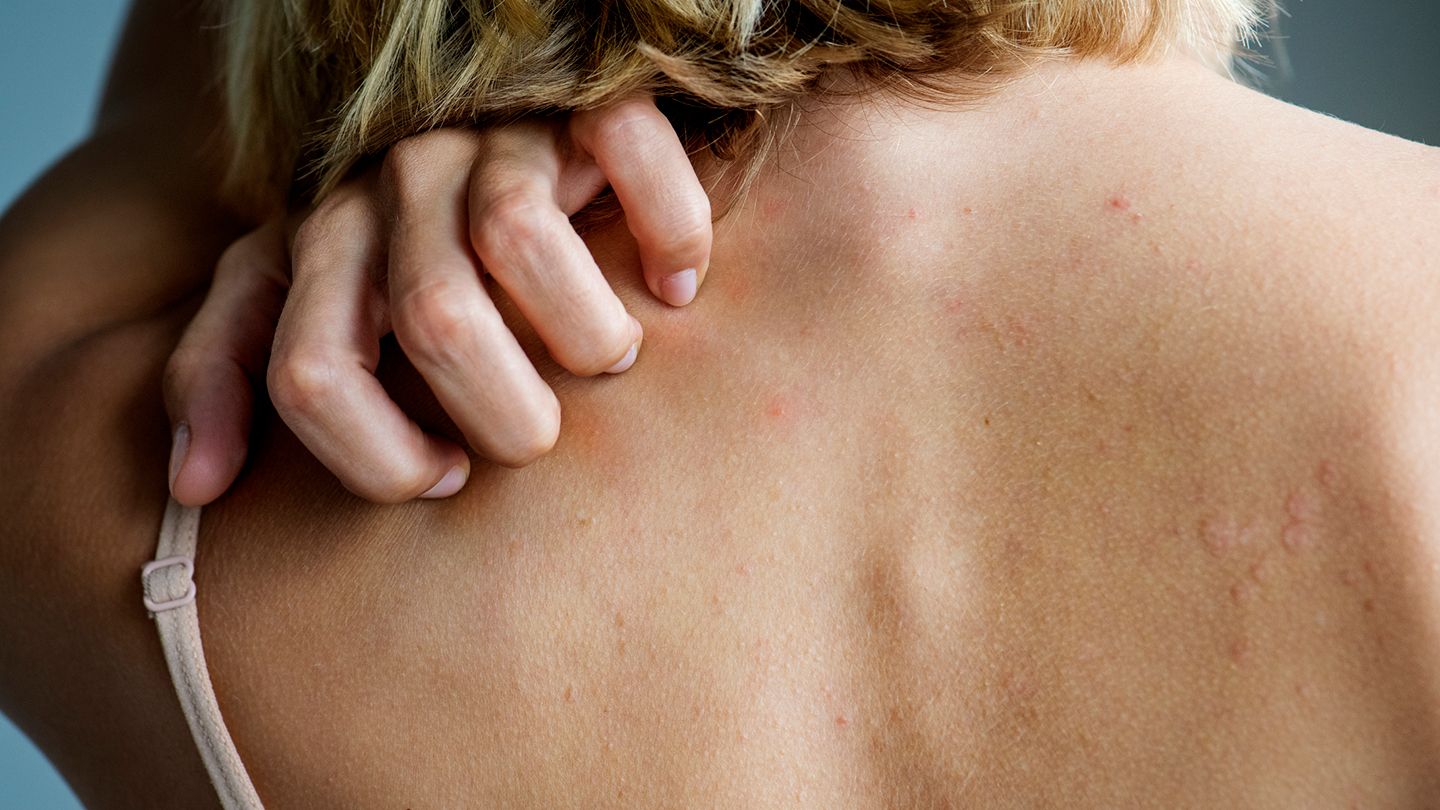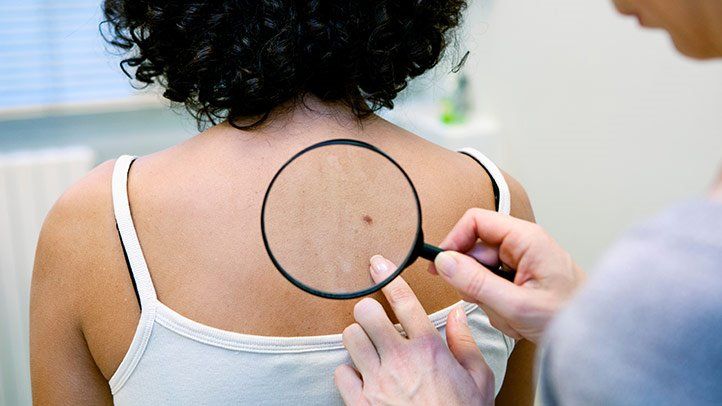Finding a rash or blisters on your child’s skin might send you into a state of panic. But before you think the worst, there’s a chance that these sores are caused by a bacterial skin infection called impetigo that’s generally harmless when treated.
Impetigo can occur in anyone, but it’s more common in children and infants than adults. (1)
This is a highly contagious bacterial skin infection, with the first signs including tiny bumps or blisters that form on different parts of the body, such as the face, the hands, and the feet. As impetigo progresses, the sores eventually rupture and develop honey-colored or yellowish scabs. (2)
Impetigo can look scary, but it’s not always painful — and the treatments out there can clear it up relatively swiftly.
Here’s what you need to know about this skin condition, including its causes, symptoms, and treatment options.
Signs and Symptoms of Impetigo
Symptoms of impetigo vary depending on the type you have. These may include: (3)
Nonbullous Impetigo
- One or more skin sores that spread to other parts of the body
- Itchiness
- Swelling
- Yellow or honey-colored crust
Bullous Impetigo
- Large, fluid-filled blisters, especially on the trunk and buttocks
- Dark-colored skin crusts
Ecthyma
- Painful blisters
- Sores
- Thick crusts
- Scarring
Even though impetigo goes away on its own within two to four weeks, treatment is recommended due to the contagious nature of this skin infection. (4)
If you don’t seek treatment, there’s the risk of passing the infection to other members of the household, or to coworkers or classmates.
See a doctor if you or your child develops sores or blisters, or if you suspect impetigo.
Is It Impetigo or Something Else?
While many doctors and dermatologists can make a diagnosis of impetigo by looking at the skin, taking a sample can also help them distinguish impetigo from skin conditions that look alike. (4)
If your child develops sores or blisters, you might assume he or she has impetigo.
But these lesions may result from another skin problem, such as:
- Scabies
- Chickenpox
- Cold sores
- Skin allergies
- Ringworm


8 Common Types of Rashes and What They Look Like
The primary difference between impetigo and other skin conditions is its cause, duration, and accompanying symptoms. For example, ringworm — which can also produce bumps and scaly patches — is caused by fungus. (5)
Scabies also has a similar appearance, but it’s caused by an infestation of tiny mites on the skin. It is also associated with a sense of itchiness on the entire body. (6) Cold sores and chickenpox are viral infections. (7,8)
Learn More About Signs and Symptoms of Impetigo
How Is Impetigo Diagnosed?
A doctor or dermatologist can usually identify impetigo by examining the look and location of lesions. For this reason, lab tests aren’t usually necessary. (4,11)
But if there’s any ambiguity, your doctor may want to examine a sample of the pus to confirm the presence of bacteria. Taking a sample from the sore can also help your doctor determine which antibiotic will work best to clear the infection. (4)
What’s the Incubation Period for Impetigo?
The time between exposure and the development of sores and blisters varies for each person. In most cases, a rash develops within 4 to 10 days of exposure to the bacteria.(12)
Prognosis of Impetigo
The outlook for impetigo is good with or without treatment. Still, skin sores and blisters usually heal quicker with treatment, plus treatment means that you’re less likely to spread the infection to other people. Impetigo often heals within four weeks without treatment, and one week with treatment. (4)
In rare cases, complications can occur with impetigo. (2)
Treatment and Medication Options for Impetigo
Your treatment course for impetigo will depend on its severity.
Topical Cream Options
Less-severe cases often respond quickly to a topical ointment or cream. In these cases, your doctor may prescribe an antibiotic cream that you’ll apply to the affected area. These include: (4,13)
- Bactroban nasal (mupirocin)
- Altabax (retapamulin)
- Xepi (ozenoxacin)
Retapamulin is approved for children as young as 9 months old, whereas mupirocin can treat adults and children 12 years and older. (4) Ozenoxacin is for adults and children ages 2 months and older. (13)
Oral Antibiotic Options
Children or adults with widespread or advanced sores may need an oral antibiotic as well. (4)
Antibiotics used to treat impetigo include:
- Augmentin (amoxicillin and clavulanate)
- Dycill (dicloxacillin)
- Keflex (cephalexin)
- Cleocin (clindamycin)
- Oracea, Doryx, Monodox, Periostat, or Vibramycin (doxycycline)
- Minocin, Solodyn, or Dynacin (minocycline)
- Bactrim (trimethoprim and sulfamethoxazole)
- Macrolides
As mentioned, these treatments can help symptoms clear quickly. However, still complete the full course of antibiotics. (9) Stopping medication too soon can trigger a recurring infection and increase the risk of antibiotic resistance. (11) In severe cases, some people need antibiotic injections to help clear the infection. (4)


How to Keep Antibiotics From Causing Diarrhea
Complementary Therapies
Along with prescription medication to get rid of the infection, practice good skin care at home to aid healing.
Soak your skin in warm, soapy water to remove dirt and crusts daily. And keep your skin covered with a bandage until you’re no longer contagious. If your child has recurring impetigo, their dermatologist can guide you in giving them a bleach bath, which can clear bacteria from the skin. With a small amount of bleach in the water, this home remedy for impetigo is safe. (4)
Otherwise, using a new towel each time you shower, in addition to not sharing towels, will help minimize the spread of infection.
Prevention of Impetigo
Even though impetigo isn’t a serious condition when treated, you should take steps to protect yourself and your child from this infection. The goal isn’t only to treat impetigo but also to stop or prevent its spread.
Because impetigo can spread from person to person, you must be diligent and act quickly after you or your child comes in contact with an infected person or objects an infected person has touched. (2,4)
One of the best ways to prevent impetigo is to have your child wash his or her hands with warm soapy water immediately after contact with someone who has the infection. (2)
If you don’t have access to soap or water, use antibacterial hand gel to help prevent an infection. (14)
Cuts, scrapes, and insect bites are common in children. To prevent an infection after a skin injury, it’s important to clean the injury immediately. You should also keep injuries or bites loosely covered with a bandage until the skin heals. (15)
Here are additional steps to take if you or your child has impetigo: (15)
- Wash clothes, linens, and towels every day.
- Don’t share personal items with family members.
- Wear gloves when caring for infected skin wounds.
- Keep your child’s nails trimmed to prevent injury from scratching.
- Wash hands frequently.
- Keep your child home from school or child care for 24 to 48 hours after starting antibiotics.
Regularly disinfect any surfaces touched by an infected person.
Complications of Impetigo
Though rare, the most common complications of this condition include: (2)
Cellulitis
This occurs when a bacterial infection affects the tissue under the skin and spreads to the lymph nodes and bloodstream. If left untreated, cellulitis can become life-threatening.
To prevent cellulitis, take quick action whenever there’s a skin wound. Clean the wound daily and apply protective topical ointment to prevent an infection. See a doctor if you show early signs of a skin infection, such as increased pain, redness, or blistering. (16)
Glomerulonephritis
Poststreptococcal glomerulonephritis is a “complicated immunologic phenomenon that occurs when the initial infection causing impetigo (generally the bacteria known as group A strep) causes an immune reaction where the body forms antibodies against some of its own cells,” says Rick Pescatore, DO, director of research at Crozer-Keystone Health System Emergency Medicine in Philadelphia. (17)


Symptoms of Strep Throat and How It’s Diagnosed
“This is a process called ‘molecular mimicry,’ which can occur when a true antigen (like group A strep) has a similar structure to the body’s own antigens. These immune complexes deposit in the kidney, causing inflammation and damage to the renal system,” he continues.
Sometimes, there’s no way to prevent this complication. But you can lower your risk by treating a strep infection early. You can also protect your kidneys from damage by reducing high blood pressure and controlling your blood sugar if you have type 2 diabetes. (17)
Scarring
The good news is that impetigo typically heals without scarring in the vast majority of cases, says Dr. Pescatore. “Left untreated, though, the infection can progress to ‘deeper’ infections like ecthyma, which is associated with scarring.” (2)
Avoid scratching or picking at sores to prevent scarring. (18)
Learn More About the Complications of Impetigo: How It Affects Your Body in the Short and Long Term
Related Conditions and Causes of Impetigo


7 Skin Conditions That Look Contagious, But Aren’t
Although impetigo develops when bacteria enters the skin through a cut or injury, it can occur in conjunction with other conditions.
Related conditions and causes of impetigo include: (21)
- Eczema
- Scabies
- Insect Bite
- Head Lice
- Diabetes
- Guttate Psoriasis
- Conditions that weaken the immune system (such as HIV or cancer)
Resources We Love
Favorite Resources for Impetigo Advice
American Academy of Dermatology (AAD)
If your dermatologist recently diagnosed you with impetigo and you want to learn more about the skin condition, the AAD has no shortage of helpful info.
Find details on impetigo symptoms and treatments, check out practical tips for coping, or use the “find a dermatologist” link if you’re unhappy with your current provider. There’s even a section for kids to learn about impetigo.
Mayo Clinic
The Mayo Clinic is another one of our favorite resources for all things impetigo. This site not only provides basic information on the ailment, but it also serves up practical advice, like how to prepare for doctor visits. You’ll find photos of impetigo, and you can even request an appointment with the Mayo Clinic — which has locations in Minnesota, Arizona, and Florida — right from the site.
KidsHealth
Anyone can get impetigo, but it’s more common in children than adults. For this reason, you may prefer to get your information from KidsHealth. This site differs from other resources in that its information is kid-specific and geared toward parents. There’s helpful guidance on how to treat and prevent the skin disease, as well as advice on when to seek medical treatment.
Cleveland Clinic
This website operated by the Cleveland Clinic, a medical center based in Ohio, contains a plethora of information on just about every condition, including impetigo. Read up on this condition, use the site to find a doctor, or schedule virtual visits with a dermatologist from your home or office.
U.S. National Library of Medicine (NLM) — ClinicalTrials.gov
The U.S. National Library of Medicine is the nation’s largest medical library. So if you want to learn about impetigo, you’ve come to the right place. You’ll find general information about the condition, plus research on various impetigo clinical trials. These studies frequently look for people diagnosed with the skin disease. You might be a candidate for future clinical trials on impetigo, so check the database regularly.
For more on preventing and managing various other skin woes, check out our article.
Favorite App
First Derm
You download apps for every other interest, so why not download an app for your skin health? First Derm, which is free on both Google Play and the App Store, is the perfect app for connecting with a dermatologist. Take two pictures of your skin and describe your symptoms in detail. A skin expert will review your inquiry and get back to you within 24 hours.
For more on how consulting a dermatologist can help improve your skin health, check out our article.
Favorite Resource for Online Support
British Skin Foundation (BSF)
The British Skin Foundation is a charity-based organization in the United Kingdom. It focuses on raising funds for skin disease research. Among the diseases on the BSF’s radar: impetigo. This site does an excellent job of breaking down the ins and outs of this disease. What’s particularly noteworthy is its forum that lets you chat with others living with impetigo. Check out the forum and feel free to make a donation for impetigo research.
Editorial Sources and Fact-Checking
- Impetigo: Overview. American Academy of Dermatology.
- Impetigo: Overview. Mayo Clinic. January 8, 2019.
- Impetigo: Signs and Symptoms. American Academy of Dermatology
- Impetigo: Diagnosis and Treatment. American Academy of Dermatology.
- Ringworm. Mayo Clinic. September 13, 2019.
- Scabies. Mayo Clinic. August 25, 2020.
- Chickenpox. Mayo Clinic. February 27, 2019.
- Cold Sore. Mayo Clinic. June 17, 2020.
- What is Impetigo. KidsHealth. June 2018.
- Impetigo: Who Gets Impetigo? American Academy of Dermatology.
- Impetigo: Diagnosis. Mayo Clinic. January 8, 2019.
- Impetigo Fact Sheet. Maryland Department of Health Prevention and Health Promotion Administration. February 2013.
- FDA Approves Topical Treatment for Impetigo. The Dermatologist. December 14, 2017.
- Teaching Kids to Wash Their Hands. Stanford Children’s Health.
- Impetigo: Tips. American Academy of Dermatology.
- Cellulitis. Mayo Clinic. February 6, 2020.
- Glomerulonephritis. Mayo Clinic. February 6, 2020.
- Impetigo. NHS. January 11, 2018.
- Ghazvini P, Treadwell P, Woodberry K, et al. Impetigo in the Pediatric Population. Journal of Dermatology and Clinical Research. February 7, 2017.
- Nardi N, Schaefer T. Impetigo. StatPearls. August 8, 2020.
- Impetigo. NHSInform. February 26, 2020.



































